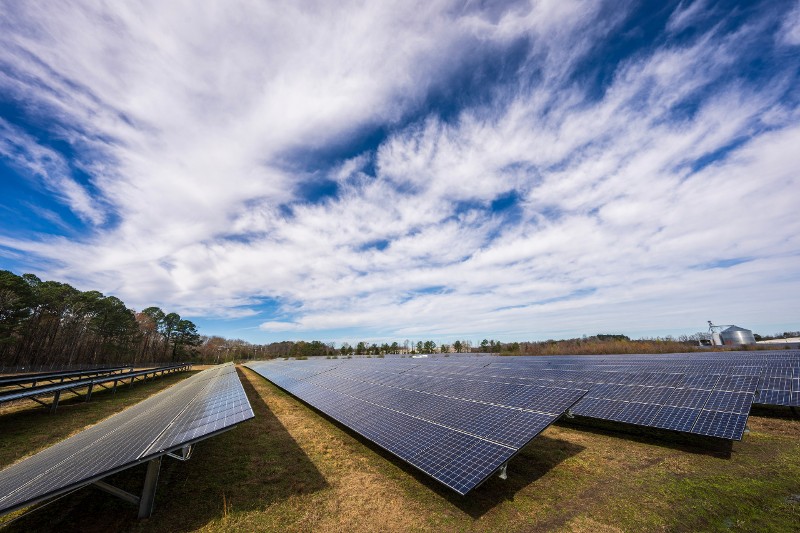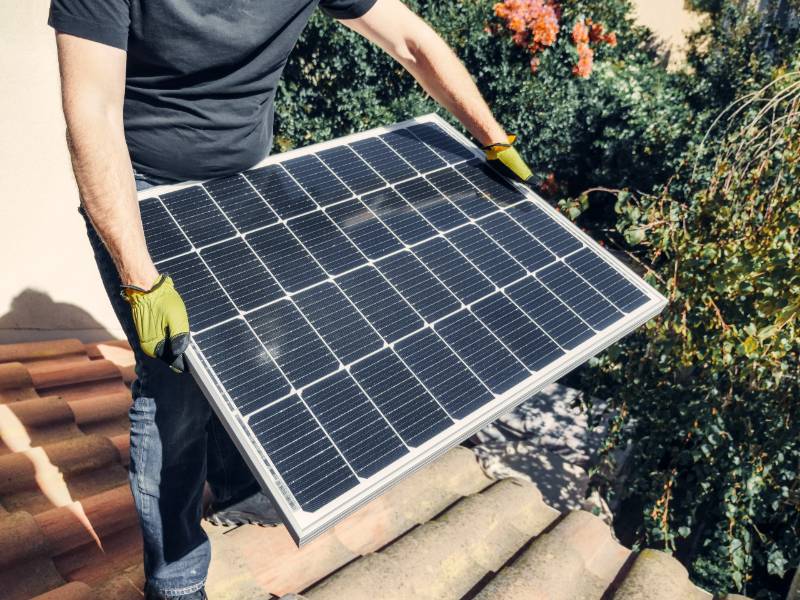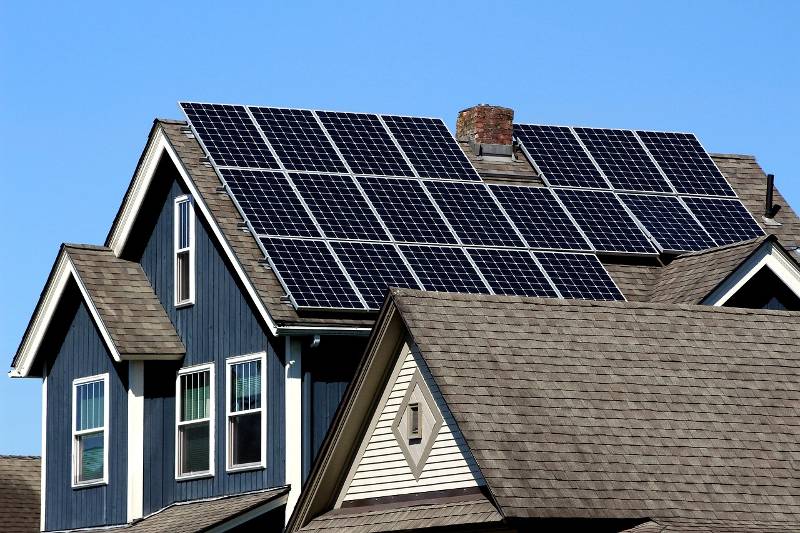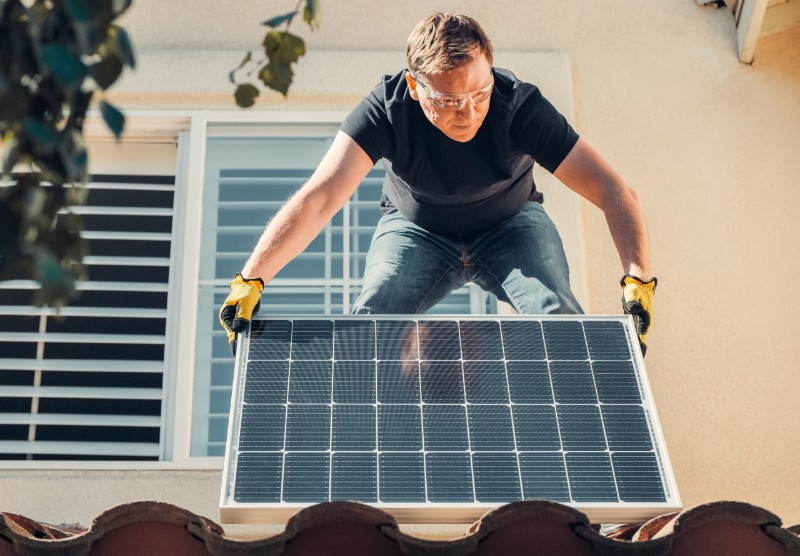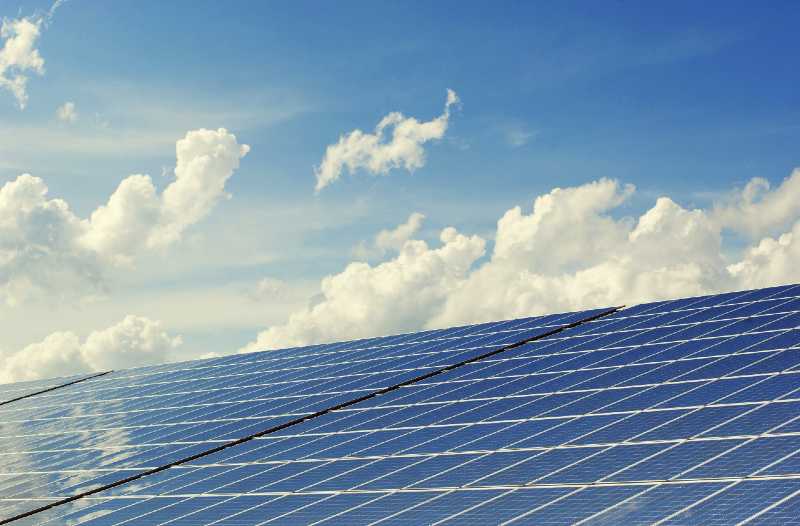Some people might be wondering can grow lights power solar panels?
Well, we can answer that question with a definite YES!
Grow lights do emit high energy light that can then be harnessed by the solar panels to generate electricity.
In this article, we will go through how can grow lights power solar panels and how effective they are.
How Do Solar Panels Work?
In order to understand how can grow lights power solar panels, first, you need to know how solar panels work.
Solar panels are made of semiconductors, which can absorb sunlight and turn it into electricity.
This can be done through a process called photovoltaic effect, which involves moving electrons from one level to another.
Light is made of small particles called photons.
When light hits a solar panel, the photons crash into electrons transferring some energy to them.
And if this energy is bigger than the threshold, then the electron will break free from the atom.
As more and more photons hit the solar panel, more free electrons will be generated, resulting in a current that can power your devices.
Related article: How Solar Panels Work Step By Step
How Grow Lights Are Able To Power Solar Panels
The answer to this question lies in the photons emitted from a grow light and their wavelength.
For example, blue wavelengths can be absorbed by solar cells more efficiently than red or yellow ones according to a study published by scientists at Helmholtz Zentrum Berlin.
This can be explained by the fact that solar panels are made of semiconductors which can only absorb light with specific wavelength ranges.
The most common types in commercial use today are monocrystalline silicon or polycrystalline silicon, and they can both produce power from photons with wavelengths between 300 nm to 800 nm.
Since blue light can be absorbed more easily, that is why high-intensity discharge (HID) lights like metal halide and especially LED grow lights emit significant amounts of this wavelength which can power solar cells effectively.
Related article: Can Artificial Light Charge Solar Panels?
Types Of Grow Lights
HID lights can be used to power solar panels because they can emit high amounts of blue light.
But there are other types that can do so as well, such as LED grow lights and fluorescents.
LED Grow Lights: Although the technology is still relatively new when compared with HIDs or fluorescents, LED grow lights can be used to power solar panels.
Thanks to the small size of LEDs and their encapsulation in plastic lenses, they can emit specific wavelengths across a wide spectrum that can then be absorbed by solar cells.
Fluorescents: Although fluorescent light has an inferior spectral distribution compared with HIDs or even LEDs, it can still be used to power solar panels.
Due to its larger size, fluorescent can emit more light in the red and blue wavelength ranges which can then be absorbed by the semiconductors.
What Determines The Amount Of Power That Can Be Generated?
As we have already mentioned, there are two main factors that can determine the amount of power that can be generated by can grow lights power solar panels.
First, it’s important to know that a regular string of LED or fluorescent bulbs cannot provide enough energy for your entire home as they can only produce small amounts of electricity.
Although you can connect several strings together and create larger installations, this will not result in a major increase of power.
The other main factor is the size and type of can grow lights you are using to generate electricity, which can determine how much energy they will be able to produce.
For example, HIDs can emit more light than fluorescents or LEDs do but that does not mean that their electrical output will be greater.
Keep in mind that can grow lights cannot be compared with one another based on how much electricity they can produce as this value will vary according to many factors, including the intensity of their output and your location which can determine whether you receive direct sunlight or not.
Related article: How To Charge Solar Lights Without Sun
Last Words
Grow lights can indeed power solar panels. However, their effect is very minimal and can’t be compared to direct sunlight, as sunlight has a much wider wavelength spectrum that can be absorbed by the semiconductors in solar cells.
Depending on the type of grow lights you use, you can provide enough electricity for powering small devices such as LED lamps or even low wattage fans but not much more than that.

